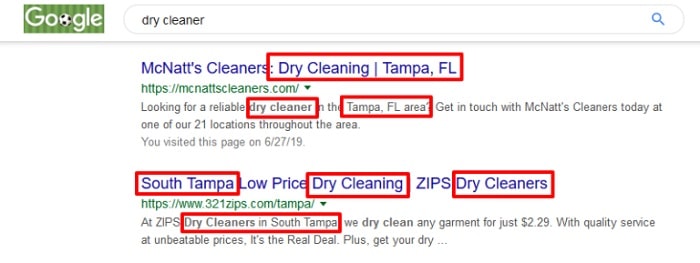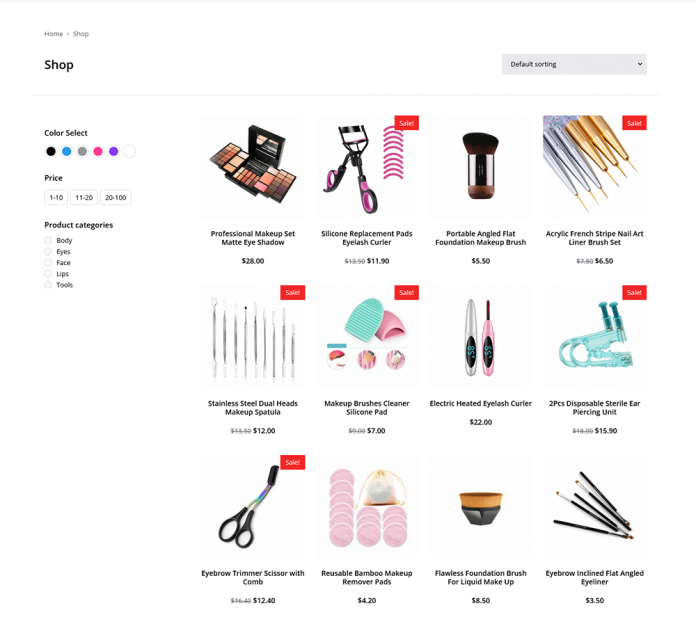A local SEO plan is required if you own a small or multi-location business and want nearby clients to find your brand through search. By optimizing your business for local search, you can reach out to highly motivated clients who are looking for the items or services you provide at precisely the appropriate time.
What Exactly Is Local SEO?
Local SEO (Local Search Engine Optimization) is the practice of enhancing your company’s web presence so that it appears when customers in your area conduct a search related to your business.
Local SEO is vital for brick-and-mortar businesses for the following reasons:
Local search intent is narrow. Local clients are looking for businesses in their area that can provide them with a certain service. Someone looking for a dry-cleaning in Tampa does not want to find a company in San Francisco. They are specifically looking for a dry cleaning service in Tampa. Local SEO assists firms in connecting with these customers by incorporating targeting into their marketing strategy.
More consumer visits may result from a local search. Customers who look for a local business are frequently prepared to visit. According to Google research, 76% of individuals who make a local smartphone search visit a business within 24 hours.
Local searches show a high level of buying intent. When individuals search for local businesses, they are frequently near the bottom of the sales funnel and ready to buy. According to Search Engine Land, 78 percent of local mobile searches result in a purchase, either in-store or online.
Local buyers are eager to visit a store and make a purchase. They want to discover a nearby location that provides everything they desire and need. Local SEO assists them in locating it.
Understanding Search Engines and Local SEO
Because search engines seek to give the most relevant and useful results possible, local SEO exists. The geographical component of local SEO distinguishes it from traditional organic SEO, allowing search engines to provide people relevant results for nearby solutions. It makes no sense for customers in Tampa to look for dry cleaning and find results for a company situated in San Francisco.
Google analyzes three ranking elements when providing the best local results.
Proximity: The distance between the business and the searcher.
Relevance: The degree to which the business is related to the search keyword.
Prominence: how well-known the company is and how much internet authority it possesses.
To increase local SEO, a company’s online presence must be optimized to appeal to these three ranking elements.
Understanding Local SEO and Search Engine Results Pages
To completely comprehend local SEO, it is necessary to grasp how local search results show on search engine results pages (SERPs). There are four ways to see local search results.
- Organic Search Results: When local businesses adhere to SEO best practices, they will get organic search results. The placement is displayed as a typical search result.
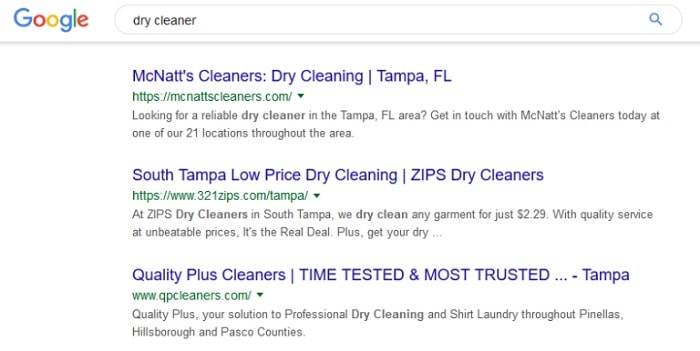
- Paid search engine results are also known as paid search adverts. As part of a pay-per-click marketing plan, a local business pays for their search result to display when customers search for specific keywords. The result’s “Ad” classification indicates that it is a paid placement.
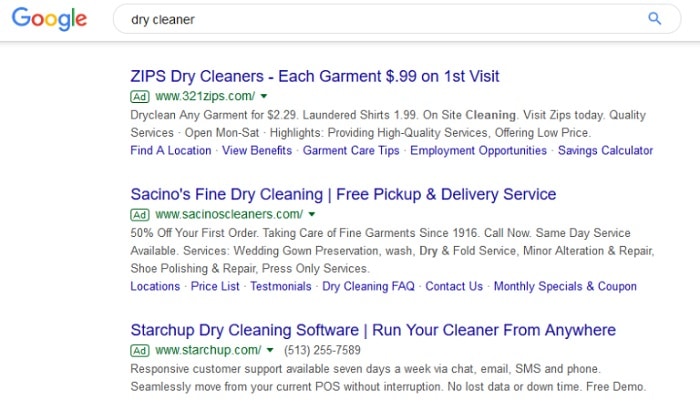
- Google My Business results are detailed search results that appear in the form of a map or a featured listing. Businesses in this rich search sector have claimed and improved their Google My Business page.
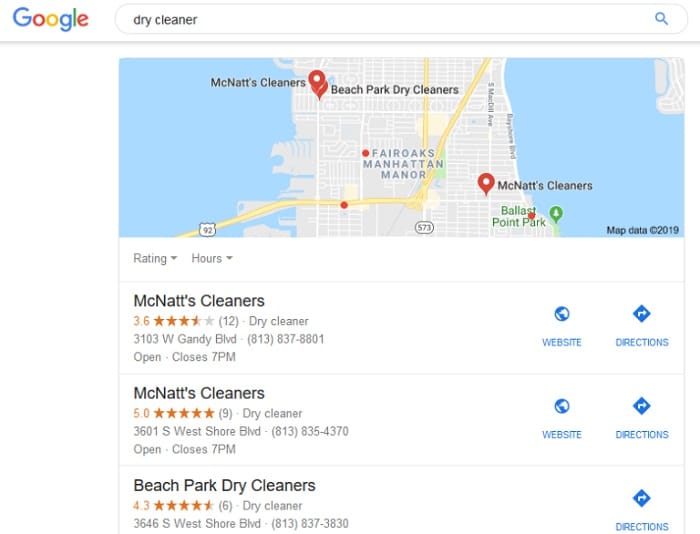
- Google guaranteed listings are high-quality search results for certain service-based industries. A company that shows as a Google Guaranteed brand has enrolled in and been validated by Google’s program.
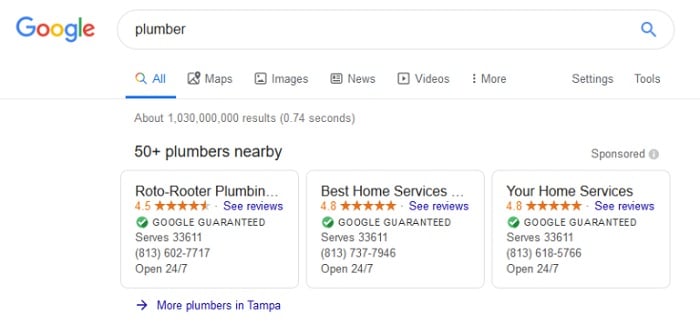
Local SEO Tips: 9 Steps to Optimizing Your Website
You now understand what local SEO is, why it is important, and how local results appear on SERPs. Let’s take a look at how you may optimize your site for local search now.
Use this local SEO checklist to appeal to Google’s ranking factors of proximity, relevance, and prominence.
1. Ensure that your website is mobile-friendly
A mobile-friendly website is responsive and can adjust to any screen size. Any SEO checklist will advise you that you should utilize a responsive site because it is an SEO ranking factor as well as a client expectation. Mobile sites rank higher in search results and give a better user experience.
Mobile-friendliness is especially important for local search because many consumers use their mobile devices to look for local companies. According to a BrightLocal study, 77% of people utilized a mobile device to search for a local business.
Furthermore, mobile-friendly sites are easier to navigate, which can result in more time spent on a site and higher conversions. This can also provide favorable behavioral signals to Google, resulting in higher search rankings.
How to Determine Whether Your Website Is Mobile-Friendly
Run a technical SEO audit or use Google’s Mobile-Friendly Test to see if your site is mobile-friendly. If your site does not satisfy Google’s mobile standards, the Google test will examine it and provide recommendations for improvement.
2. Include your company’s address on your website [Local SEO]
Include your physical address on your website to assist Google to understand where your firm is located.
If you only have one location, include your address in the site’s bottom and contact page.
If you have numerous locations, develop a locations page that displays the addresses for each site, as well as a separate page for each location.
Embed a Google map of the business’s location on your contact and location pages.
Add structured data depending on location to your website.
This information assists search engines in associating your company with a specific location or area.
Read more on : Image SEO, HTTP Status Codes Cheat, Black Hat SEO, Website Speed Optimization
How to Incorporate Location-Based Structured Data into Your Website
Structured data, often known as schema markup, is microdata that is added to your website to assist search engines to interpret it. Structured data based on location makes it easier for search engines to identify the location of your organization.
Use our guide Schema Markup 101: How to Create Rich Search Results and Boost SEO to learn how to add structured data to your site.
3. Establish a Google My Business page
Google My Business is a free listing service that allows businesses to create a listing for each of their locations. We looked at how Google My Business (GMB) sites appear as rich results on SERPs earlier in this post. They can take the form of a list of businesses or a map.
GMB rich results may additionally include information about a business location (such as its address, hours of operation, phone number, and so on) as well as call-to-action buttons (to visit the website, get directions, contact, etc.).
Create a GMB page for each of your locations if you want your company to appear in these rich listings.
Boost the visibility of your Google My Business page
The creation of a GMB page is only the first step. By improving and interacting with your GMB page, you may increase its visibility. Update and interact with your page on a regular basis by uploading photographs, writing posts, responding to reviews, and adding FAQs.
4. Create business citations
For local SEO, Google My Business is the most crucial business citation. However, it is not the only one that is important.
A business citation is a reference of your company on the internet that contains your name, phone number, and address. Citations are vital since they inform Google that your company is genuine and trustworthy. They can be found in local and national directories such as:
- Angie’s List
- The Yellow Pages
- Citysearch
- Foursquare
- TripAdvisor
- Apple Maps
- MapQuest
Create profiles for your company on the major national citation sites, as well as regional or local business directories.
How to Locate Citation Sites
Examine what directories already link to your competitors or other neighboring firms to find opportunities to build citations for your site.
- Enter a known competitor’s or another local business’s website into Alexa’s Competitor Backlink Checker.
- Look at the pages that link to the target site to locate directory sites where you can list your company.
5. Take note of NAP consistency
When you create a citation for your company, it shows search engines that your company is reliable and well-established. All of your hard work, though, could be undone if your citations are inconsistent.
Pay particular attention to your NAP consistency when you develop business profiles across the web.
The consistent usage of your company’s name, address, and phone number is referred to as NAP consistency. A consistent NAP version makes it easier for search engines to recognize and rank your site. Inconsistent NAP might cause search engines to become confused, resulting in a drop in search visibility.
How to Check the Consistency of Your NAP
Sign up for a local citation management service or conduct a manual search to identify your business listings to check and manage your NAP consistency.
A service like Synup searches the web for your business listings updates them as needed, and manages them for you. You may also manage listings on your own by searching for sites that connect to your company and double-checking that your information is proper.
Use Alexa’s Site Linking In tool to locate websites that connect to yours. Enter your website’s URL to view the precise URLs that are connecting to it. Visit each page to ensure that your NAP is being used correctly.
6. Optimize your location and category’s title tags and meta descriptions
Title tags and meta descriptions are meta tags or pieces of code that are placed to the backend of a webpage to assist search engines in determining what the page is about.
A title tag is a shortened version of the page title that appears on search engine results pages. The meta description provides a brief description of the page. It also appears in the web page’s search results. Optimize your title tags and meta descriptions for your location and business category to increase local SEO.
How to Improve Your Title Tags and Meta Descriptions [Local SEO]
- Include your area, region, or city, as well as your company type, in both the meta title and description of your homepage.
- Include the city and category in the title and description of the location pages.
- Title tags should be no more than 60 characters long.
- The meta description should be no more than 320 characters long.
Page Title SEO: How to Optimize Title Tags for Search Engines and Readers has more information on optimizing title tags.
7. Optimize your site for local keywords [Local SEO]
Along with optimizing your major pages for category and locality, you should also optimize secondary pages on your site for popular, locally targeted keywords.
Long-tail keywords and phrases with geographic locations, such as dry cleaner in Tampa, top Tampa dry cleaner, or dry cleaner near me, are examples of locally focused keywords. Conduct keyword research to identify popular, low-competition local search terms that will generate traffic to your site.
In our post How to Find Long Tail Keywords: A Complete Guide, you’ll learn how to reach and engage your most qualified customers.
How to Locate Local Keywords
1. To find terms linked to your business, use Alexa’s Keyword Difficulty Tool. To find different permutations of the target term, search for your industry category.
Identify popular keywords within your competitive range (those with a lower competitiveness score than your site’s Competitive Power). Then, either targets the term as is or consider including your city or geographic location in the phrase.
2. Use Alexa’s Site Keywords tool to determine which keywords are driving traffic to prominent local business directories. Enter a site like Yelp or Angie’s List and apply a filter to only show search keywords containing your industry.
Identify prominent terms that users are searching for in relation to your business.
3. To obtain even more term possibilities, use Alexa’s Audience Overlap Tool and Competitor Keyword Matrix. Begin by inputting a popular directory website into the Audience Overlap Tool.
Create a Competitor Keyword Matrix with up to nine additional prominent directory sites. Filter the results to only contain keywords related to your company category.
How to Rank Your Website for Local Keywords
Once you’ve identified a list of local keywords to target, develop a content and SEO strategy for each term.
- Create content that focuses on the terms you discovered during your keyword research.
- Optimize each page for a single keyword. To thoroughly optimize the page for the target phrase, use an on-page SEO checklist.
- Use Alexa’s On-Page SEO Checker to evaluate your on-page SEO. To scan the page, enter the page URL and the target term. The program identifies any on-page SEO optimization flaws as well as any missing possibilities. It also includes instructions for making changes to improve the page.
8. Make use of off-page SEO
A local SEO strategy entails more than just on-site optimization. Off-page SEO is equally important for increasing the authority and relevancy of your site.
The quantity of links linking to your website indicates to Google that your website is authoritative and trustworthy. The more (high-quality) links your site has, the more significant it seems to search engines. Launch an off-page SEO strategy to get high-quality backlinks for your website.
How to Create High-Quality Backlinks to Your Website
Make preparations for: To build quality links for your site, make plans for:
- Posting as a guest
- Acquisition of a brand mention link
- Creating Broken Links
- Marketing using influencers
9. Obtain customer feedback for your company
Customer reviews are another factor that Google analyzes when determining the trustworthiness of your website. When deciding search rankings, Google considers the number and type of reviews for your business.
Customer reviews must be included as part of your local SEO strategy. Your Google My Business page is the most significant area to collect reviews. However, it is also beneficial to collect them on other citation sites such as Facebook, Yelp, Angie’s List, and so on.
Obtaining Customer Feedback for Your Company
Obtaining reviews for your company should not be a one-time event. Make collecting reviews a continuous effort by:
- Highlight current reviews on your website so that customers are aware that you gather them.
- Including links to relevant review sites on a page on your website that asks customers to write a review.
- Offering incentives to encourage customers to post honest evaluations. You should never, ever pay a customer to write a positive review.
- Customers are being asked to post reviews via follow-up emails and social media interactions.
Don’t Pass Up Any Local SEO Chances
Local SEO assists small and multi-location businesses in making the most of search marketing by connecting them with the people who matter the most – local consumers and shoppers seeking nearby businesses.
You May also like sitescorechecker




